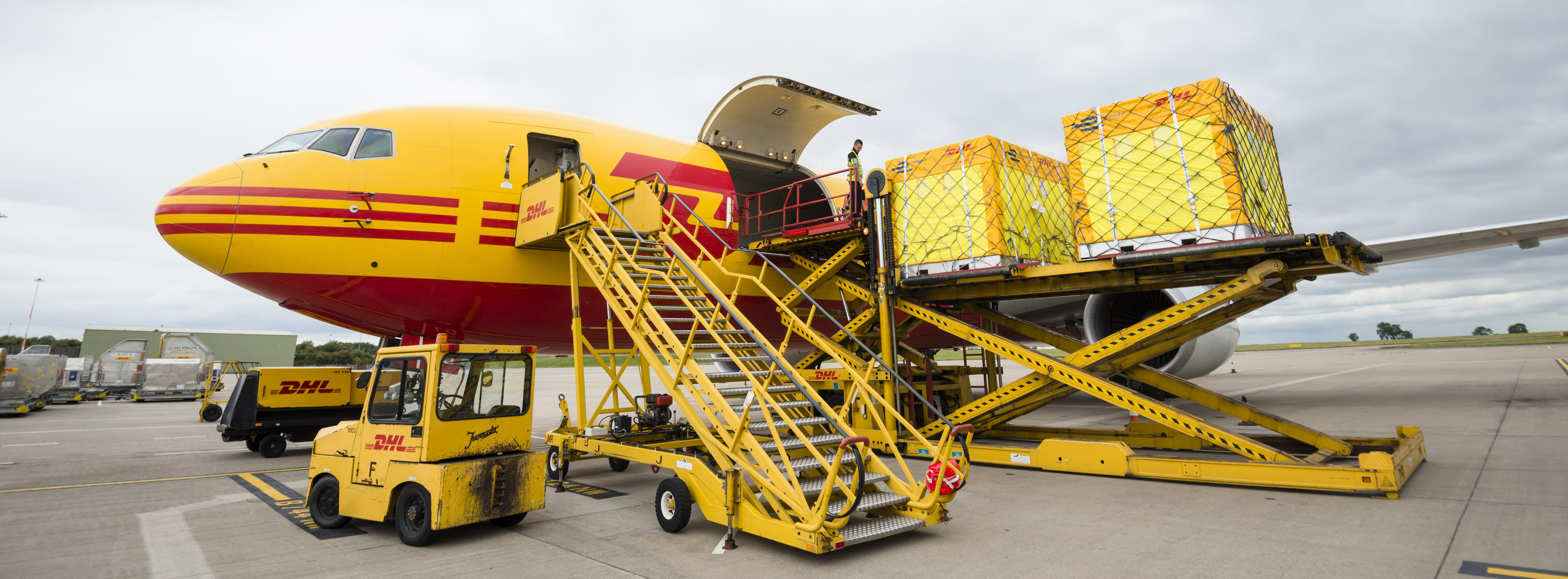Air Transport
Characteristics of Air Transportation
 Photo courtesy of BDLOpens in new window
Photo courtesy of BDLOpens in new window
To a great extent, air transport competes with road transportOpens in new window, and to a lesser degree with road carriers. It is a growing industry, especially with the new global economy. Goods need to be supplied to distant countries, and one of the fastest ways of doing this is by air. |
Air carriers transport only around 0.1% of ton-mile traffic in the United States. Although airfreight offers the shortest time in transit (especially over long distances) of any transport mode, most shippers consider air transport as a premium emergency service because of its higher costs.
However, the high cost of air transport may be traded off with inventoryOpens in new window and warehousingOpens in new window reductions or justified in some situations:
- for high-value products,
- for perishables,
- in limited marketing periods, and
- in an emergency.
The portion of total product costs dedicated to transportation is an important issue for most shippers. The high price of airfreight consumes a greater portion of low-valued products’ total costs, so it is not economically justifiable for these items. This could be why air carriers usually handle high-value items.
Total transit time (from pickup at the vendor to delivery to the customer) is important to shippers and the customers. From this point of view, well-managed surface carriers can compete favorably with air carriers, especially on short and medium hauls.
Even though air carriers provide rapid time in transit from terminal to terminal, they may spend too much time on the ground (e.g., for pickup, delivery, delays and congestions, and waiting for scheduled aircraft departures).
Advantages of Air Transportation
- Air transport can generally handle items of high value such as expensive jewelry and new computers. Transporting low-valued items by air is not cost-effective. (The cost of transporting heavy coal from Sasolburg to Durban would be very high; it would be better to transport the cheap coal by rail, owing to its weight and value.)
- It is usually justified if customer service levels are very important (the customer wants it today!)
- It provides rapid time in transit, but terminal delays or congestion may reduce its advantages. Service coverage is generally limited to large cities and towns.
- Loss and damage ratios resulting from transportation by air are considered lower than the other modes. The classic study by Lewis et al. shows that the ratio of claim costs to freight revenue was only about 60% of those for road and rail.
Airline companies generally own neither airways nor airports. Air spaces and air terminals are usually developed and maintained with public funds, so fixed air freight costs (including aircraft purchases, specialized handling systems, and cargo containers) are lower than railOpens in new window, waterOpens in new window, and pipelineOpens in new window.
Air-transport variable expenses are extremely high because of fuel, maintenance, and the labor intensity of both in-flight and ground crew. Variable costs are reduced by the length of journey because takeoffs and landings are the most inefficient phases of aircraft operation. Moreover, increasing shipment sizes reduces the variable operating cost per ton-mile. Hence, variable costs are influenced by both distance and shipment size.
See also:
- J.C. Johnson, D.F. Wood, D.L. Wardlow, P.R. Murphy, Contemporary Logistics, seventh ed., Prentice Hall, Upper Saddle River, NJ, 1999, pp. 1 – 21.
- A. Rushton, P. Crouche, P. Baker, The Handbook of Logistics and Distribution Management, third ed., Kogan Page, London, 2006.
- S.C. Ailawadi, R. Singh, Logistics Management, Prentice Hall of India, New Delhi, 2005.
- R.H. Ballou, Business Logistics/Supply Chain Management: Planning, Organizing, and Controlling the Supply Chain, fifth ed., Pearson-Prentice Hall, Upper Saddle River, NJ, 2004.
- J.R. Stock, D.M. Lambert, Strategic Logistics Management, fourth ed., Irwin McGraw-Hill, New York, 2001.
- G. Ghiani, G. Laporte, R. Musmanno, Introduction to Logistics Systems Planning and Control, John Wiley & Sons, NJ, 2004, pp. 6 – 20.
- M. Hugos, Essentials of Supply Chain Management, John Wiley & Sons, Hoboken NJ, 2003, pp. 1 – 15.
- H.T. Lewis, J.W. Culliton, J.D. Steel, The Role of Air Freight in Physical Distribution, Division of Research, Graduate School of Business Administration, Harvard University, Boston, MA, 1956, p. 82.
- D. Riopel, A. Langevin, J.F. Campbell, The network of logistics decisions, in: A. Langevin, D. Riopel (Eds.), Logistics Systems: Design and Optimization, Springer, New York, 2005, pp. 12–17.
- M. Browne, J. Allen, Logistics of food transport, in: R. Heap, M. Kierstan, G. Ford (Eds.) Food Transportation, Blackie Academic & Professional, London, 1998, pp. 22–25.
- J. Drury, Towards More Efficient Order Picking, IMM Monograph No. 1, The Institute of Materials Management, Cranfield, 1988.

